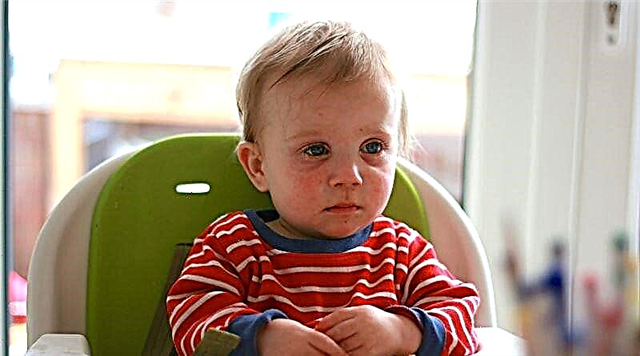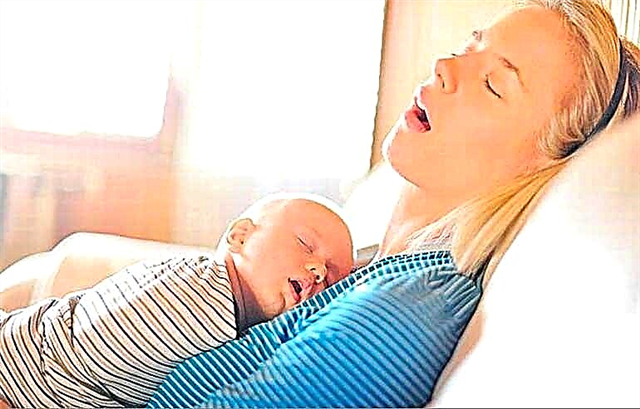
With each subsequent week of pregnancy, the baby in the mother's belly continues to grow and develop. By week 17, many different changes had already occurred in his body.

Appearance
By this time of pregnancy, the baby's body is already quite well formed. The baby's body proportions are well distinguishable. The baby looks slightly larger than in the previous weeks of pregnancy.
This is largely due to the fact that adipose tissue begins to form in the child. It carries out a very important function in the child's body. Through adipose tissue, the body is "protected" from the effects of adverse environmental factors such as excessive overheating or hypothermia.
With each subsequent week of pregnancy, the amount of fat in the child's body will gradually increase. By childbirth, it must reach the optimal value necessary for the birth of a child.

Vernix appears on the fetus's body. In many ways, its appearance is facilitated by the intensive work of the sebaceous and sweat glands, which are found in large quantities in the skin. The lubricant covers almost the entire body of the child. In addition to the secretion of the sebaceous glands, it is formed by desquamated epithelial particles, which are physiologically separated from the surface of the baby's skin.
Primary lubrication is very important for the baby during this period of his intrauterine life. It protects the delicate skin of the child from the effects of negative external influences.
The child's facial contours are already quite clear. The auricles are well shaped and close to the neck. The baby's eyes are closed. The baby can turn away from bright light directed towards him. The fetal hearing aid begins to function gradually.

Location
Doctors use various methods to assess the position of the baby in the mother's belly. The most accurate of these is an ultrasound examination. With this simple method, you can determine the breech presentation of the fetus, as well as other options for the location of the baby in the uterus.
In case of multiple pregnancies, an ultrasound specialist must necessarily assess where each of the babies is. Carrying twins or triplets is usually accompanied by more exciting sensations for expectant mothers.
The location of the baby in the uterus at this stage of pregnancy is inconclusive. The fetus may turn over several more times before delivery. This happens especially often with rather active kids - "fidgets". The doctor determines how the baby is located in the uterus several times during the entire period of pregnancy.

Basic body parameters
The size of the child at this time of his intrauterine development is very important. They allow doctors to assess how well a child's body is developing.
To carry out such an assessment, the height and weight of the baby must be assessed. How much a child weighs can be determined by performing an ultrasound examination. The norms of the main clinical parameters of fetal development are presented in the table below.

How does the baby change?
Very important changes are taking place with the baby. He has the rudiments of all 32 permanent teeth. They will appear, of course, much later, but they are laid already in the period of intrauterine development.
Circulatory system
The baby's cardiovascular system is already well formed by 16-17 weeks of intrauterine life. The heart of a child, like that of adults, consists of four chambers and is capable of beating. It should be noted that the fetal heart beats much more often than in adults. It can pump over 28 liters of blood per day.
To assess the performance of a child's heart and blood vessels, experts use a special clinical criterion - heart rate (HR). The heartbeat is measured, usually during an ultrasound examination. However, at this stage of pregnancy, the doctor can already determine the heart rate using a conventional stethoscope. The norm of this clinical indicator at this time is 120-150 beats per minute.

Leather
The baby's skin still has an imperfect structure. Its density is insufficient. Through it, the blood vessels are well visible. With each subsequent day of pregnancy, it will change, becoming more dense and protecting the baby from the aggressive effects of the external environment.
Intensive work of the heart and active blood flow contribute to the fact that the baby's skin is bright pink. Outside, the skin is covered with original lubricant, which makes it more protected from the effects of negative external factors.


Brain and nerves
By the 17th week of pregnancy, the fetus is actively developing the nervous system. Significant changes begin to occur in the brain as well.
The number of convolutions gradually increases. This "tortuosity" of the cerebral cortex is very important. It determines the most important abilities of the brain - to speak, write, read, assimilate various information. Neurons (brain cells) begin to actively interact with each other, forming special interneuronal contacts.
Nerve analyzers are also actively developing. Babies at this time of their intrauterine development are already able to determine different shades of taste. This feature is due to the presence of taste buds on the tongue. The child can identify bitter, salty and even sweet tastes well enough. He does this by swallowing amniotic fluid. The taste of amniotic fluid largely depends on the food that the expectant mother consumes at this time.

At the 17th week of pregnancy, the fetus is already able to distinguish sounds. The baby "hears" the mother's voice and can even react to it. Many experts who monitor pregnant women note that the mother's voice has a calming effect on the baby.
That is why doctors recommend that expectant mothers talk with their babies who are in their tummies. Such conversations help to establish psycho-emotional contact between mother and child.

Digestive organs
By the 17th week of pregnancy, the baby's digestive tract is almost completely formed. The baby already has a liver and gallbladder.
The liver tissue is already starting to produce bile, which enters the baby's intestines. With the participation of bile, the formation of meconium, the original feces, occurs. Truly, the organs of the gastrointestinal tract will begin to work only after the first portion of breast milk enters the body after the baby is born.
The intestines of the child at this stage of its intrauterine development are already contracting quite well. This is necessary so that in the future food passes freely and is digested. Special villi have already formed on the walls of the intestine. Through them, nutrients, absorbed from the intestinal lumen, enter the bloodstream and are carried throughout the body.

External and internal secretion glands
In a child at 17 weeks of gestation, the sweat and sebaceous glands are already functioning quite well. Their secret is necessary for the formation of vernix, which covers the body of the fetus.
The pituitary gland and the thyroid gland are formed and are already functioning. The first hormones begin to appear in the systemic circulation. Boys even have a special male sex hormone in their blood - testosterone.
Urinary function
By the 17th week of pregnancy, the kidneys of the fetus are already formed. The kid can urinate on his own. Many expectant mothers are afraid of this and are afraid that the fetus may be "poisoned". They should not worry about this. This reaction is completely physiological and is conceived by nature in order for the child's urinary system to develop properly.

Good fetal kidney function contributes to the regular renewal of amniotic fluid. Experts note that the chemical composition of the amniotic fluid in which the fetus is located can be updated in this way several times during the day.
Breath
With active swallowing of amniotic fluid, the work of the muscles involved in the act of breathing also improves. Swallowing movements cannot be performed without intensive lifting of the chest, which the fetus does. This contributes to the fact that the intercostal muscles begin to improve and develop more actively.
The baby's lungs and bronchial tree continue to develop. They must be well formed before the baby is born. This is necessary so that the baby can breathe on its own after birth without assistance and artificial respiration. The glottis and larynx at this stage of pregnancy are already formed and ready to perform their functions.

Bones and muscles
The structure and density of the baby's bone tissue changes every day. By the 17th week of pregnancy, the bones of the fetus are already quite dense.
Joint mobility also improves. This contributes to the fact that the baby can already bend and unbend the arms and legs. Active children can roll over several times. At this time, the fetus, as a rule, begins to actively “examine” its body.
A baby can touch his face and umbilical cord, close and open his mouth, swallow, yawn, and even hiccup.
The active movements of the baby can lead to the fact that his mother feels the first movements. Usually, these symptoms are more pronounced at 17 weeks of pregnancy in miniature and fragile women.

The intensive development of the nervous system and facial muscles in the fetus contributes to the appearance of various emotions on its face. The kid can smile, grimace and even frown a little.
It is important to note that many of these emotions are also "training" and are committed by him unconsciously.
Immunity
The baby develops its own white cells of the immune system - leukocytes. They are necessary to protect the child's body from various pathogenic bacteria and viruses. Also, the baby has a small amount of its own interferon in the bloodstream, which is necessary for good immunity.

Sex determination
One of the most exciting issues for future parents, of course, is the gender of the child. At the 17th week of pregnancy, it is already possible to determine it. At this stage, the fetus has already formed the main external sexual characteristics. It is on them that ultrasound specialists determine the sex of the babies. Moreover, in girls, the uterus is almost completely formed, and in boys, the testicles.
It is important to note that mistakes in determining sex at this stage of pregnancy are quite possible... This usually happens when an inexperienced ultrasound specialist is conducting a study or if the fetus turns away from the ultrasound probe during the examination. In this case, you can determine the sex of the baby at the next scheduled ultrasound examination.

About what screening shows at week 17, how the sex is determined and why an ultrasound is performed, see below.



